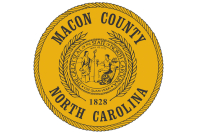A Melange of murder and myth
If you have a TV, you probably know that the film version of Dan Brown’s blockbuster novel is scheduled for release this month. According to a bevy of movie commentators, their projections indicate that “The Da Vinci Code” will be the most popular film of the summer (and possibly, of the decade). Of course, the book has already eclipsed all “best-seller” records with 8 million copies sold in just the first year.
It is now in its third year (60 million copies), still selling well and has spawned a dozen parasitic spin-offs (The Da Vinci Code Revealed, The Truth about the Da Vinci Code, etc.). With credentials like that, this fast-paced thriller deserves a review — even at this late date!
The Da Vinci Code is a classic example of “mind candy.” Unlike the steady glut of brainless adventures in current cinema that use visual pyrotechnics and lurid sex to attract your attention, mind candy epics actually engage your brain.
In order to follow the action, the audience is required to think about the correlation between a teasing assortment of provocative ideas and symbols with names like The Great Goddess, the “Divine Proportion,” The Vitruvian Man and Fibonacci’s numerical series.
Despite the arcane knowledge that permeates the book, a covey of critics are blasting away at The Da Vinci Code, which they consider to be a trashy potboiler filled with lies and half-truths. Well, of course! It’s a novel! It is also a “thriller” with the singular purpose of entertaining the reader with a rollicking ride on the Conspiracy Express.
However, if we stick with the potboiler analogy, we can easily produce a recipe for a hell of a literary stew:
Related Items
Take one Robert Langdon, handsome, world-famous Harvard professor who specializes in art history and religious symbology and add Sophie Neveu, a spunky, sexy cryptologist with a mission (She wants to discover who killed her grandfather). Now for a bit of brio, let’s add a psychotic albino monk with a pistol who is addicted to self-flagellation and killing enemies of “the Way.” Baste these three ingredients in mystery, add a dash of forbidden knowledge, stir in a spoonful of heretical theories and add a pound of conspiracy. Bring to a furious boil while sprinkling the stew generously with cryptic messages, symbols and fascinating examples of etymology. Garnish sparingly with wit and serve.
Quite frankly, when I read the first 40 pages, I was hooked. Brown is a master of a kind of breathless, relentless pacing, plus he manages to end almost every chapter with a cliffhanger that spurs you on to the next chapter. In addition, this novel manages to combine a multitude of curious, desparate facts (or pseudo-facts) and arrange them in an appealing sequence like beads in a necklace, or boxes, within boxes, within boxes. Each mystery solved merely engenders yet another mystery.
Of course, there is a lot more going on in The Da Vinci Code than my recipe indicates. While there may not be grandeur and beauty in Dan Brown’s prose, his plot unwinds amid grandeur and beauty. This book opens at midnight in the echoing corridors of the Louvre where a dying man wretches a huge Caravaggio painting from the wall. Langdon and Neveu spend the majority of their time racing through ancient monasteries and historic cathedrals with vaulted ceilings and venerable crypts. They study ancient documents, detect clues hidden in the world’s greatest paintings (The Mona Lisa, The Last Supper, the Marriage at Cana, etc.) and find secret codes and hidden meanings in other artistic creations that range from Da Vinci’s Notebooks and the Dead Sea Scrolls to Walt Disney’s “The Little Mermaid.”
This review is struggling to avoid revealing too many of the book’s most intriguing ideas. After all, that is the powerful motor that runs Brown’s plot — mystery and revelation. Readers need to make these discoveries in the book. Therein is the fun! Suffice it to say that the fate of Christianity may be at stake. The Vatican may be involved. As the intrigue and suspense mount, Langdon and Neveu find themselves pursued by an egotistical French policeman, Bezu Fache, whose relentlessness would compare favorably with Inspector Javert in Les Miserables (or Tommy Lee Jones in “The Fugitive”). Oh, and I must not forget Father Aringarosa, the man behind the mysterious Catholic order called Opus Dei — sworn to protect the “great deception.”
However, as Brown’s appealing protagonists speed across France, England and Scotland, commandeering sports cars, Land Rovers, armored cars and private jets (they are searching for the Holy Grail, OK?), they maintain a constant, tantalizing dialogue about topics that include: the Knights Templar, Freemasons, rose symbolism, Arthurian legend and a mass of information that could best be described as “cultural trivia.” For example, did you know that gargoyles got their name from their Notre Dame counterparts which are rain spouts on the cathedral roof, and they make gargling sounds as they discharge water? How about the fact that if you take the number of male bees in a hive and divide it into the number of female bees, you will get 1.616 — “the Divine Proportion”! That is the same number that you will get if you divide the distance from the top of your head to the floor by the distance from your navel to the floor.
Does that have anything to do with finding the Holy Grail or revealing the existence of the Great Goddess before the Christian fathers buried her? Yes! There is much talk of pentacles, hermaphrodites, ancient riddles and those kinky sex rites (last seen in the movie “Eyes Wide Shut”) — all of which may be irrelevant, but fun, a trip to discover! — Just like The Da Vinci Code.
(Gary Carden is a writer and storyteller who lives in Sylva. He can be reached at This email address is being protected from spambots. You need JavaScript enabled to view it..)









